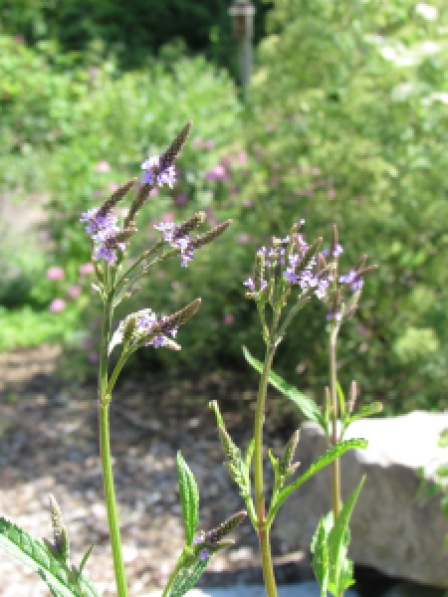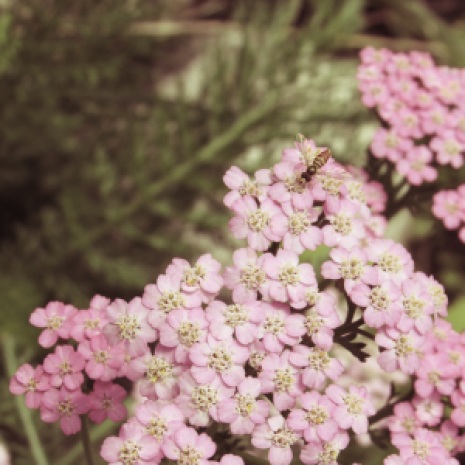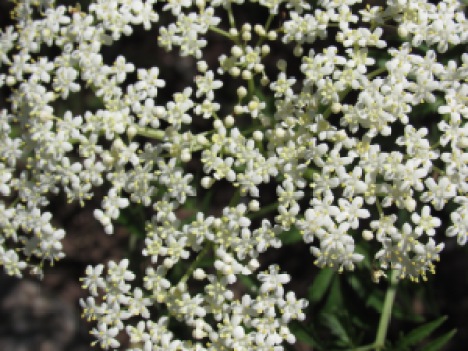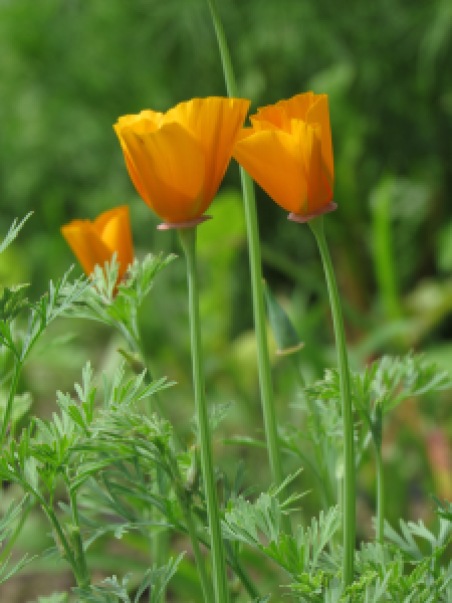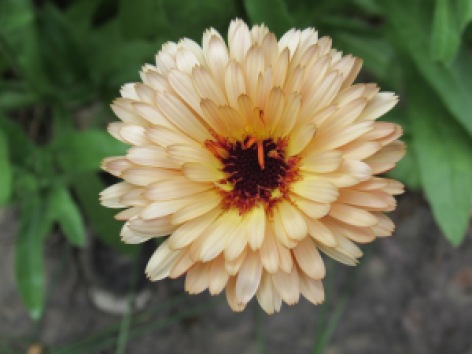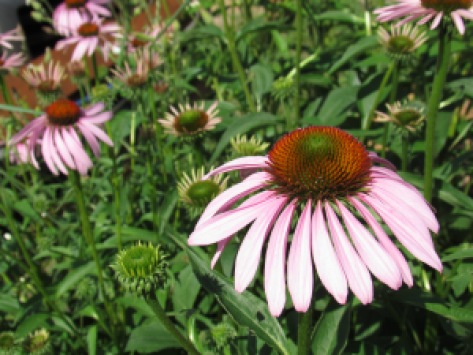


























The flowers are here, folks. Please enjoy!





Hi friends~ Tiny Pony Apothecary will be documenting the plants in the gardens and wilds that we cultivate and harvest for medicine-making and pleasure. We’d love to have you follow our journey this season. . .




 As some of you have read before on this blog, I am a freelance writer and Associate Academy Educator at the Herbal Academy, an online herbal education project that holds SO MUCH awesome information and hosts amazing resources. In addition to plant monographs and articles for the Herbarium, I also contribute to the blog. Check out my newest exploration of herbs, the human palate, and coming out of winter — Sour Flavor: How Taste Can Rinse Out Winter.
As some of you have read before on this blog, I am a freelance writer and Associate Academy Educator at the Herbal Academy, an online herbal education project that holds SO MUCH awesome information and hosts amazing resources. In addition to plant monographs and articles for the Herbarium, I also contribute to the blog. Check out my newest exploration of herbs, the human palate, and coming out of winter — Sour Flavor: How Taste Can Rinse Out Winter.

Today the equinox came, sandwiched between two watery eclipses spanning Pisces and Aries, bracing us inside this liminal space, a transition to spring and return of growing, a day awash in both strong bright light and cold brisk winds. Watching through the windows at breakfast, standing in the greenhouse sprinkling soft rains on my flats of tiny green starts, I could feel a dragon stirring in the ground beneath my boots.
Follow the link to read the full article!

This flower essence is for everyone but especially supportive for teens, peri-menopausal folks, and those of us who make queer magic. Blue cohosh flower essence supports us in sifting through the hesitancy or anxiety we might feel around sex and sexuality, particularly during times of transition, change, and growth, and encourages openness and acceptance of the sacred ways in which we are each made to contribute to the creative and sensual energies of the planet in this body and lifetime.

#foresttherapy #sexpositiveherbalism #caulophyllumthalictroides #rampseasonyall #queermagic #vitalism #feministmedicine #floweressence #subtlebody

When the first spring witch hazel flowers waves their soft fringes at you know maybe it’s going to be okay.
The physiological medicine of witch hazel’s astringency serves to draw lax or sagging tissues together, firming and supporting the structures of the body. In the subtle energetic body, the flower essence also acts in this drawing capacity. Whether pulling the soul upward from the darkness of winter or from a stuck or stagnant location where decision-making feels impossible, the flower essence of witch hazel encourages movement supported by grounded self-knowing and the cultivation of internal light which reaches for the external world. In this way, the flowers of Chinese witch hazel are applied to the subtle body for the purposes of composting, transforming, and releasing trauma and trauma-related stress from the cellular levels of the body.

#herbsfortrauma #plantsgotyourback #queercare #resilience #plantmedicine #subtlebody #witchery

This Mercury retrograde of revisiting + rethinking has been a heart-wringer for all us resilient creatures.
Rose medicine brings warm comfort as we choose to return to our bodies each morning, as we stumble through navigating our own boundaries and one another’s. I’m learning to choose snow magic over fear of slipping on ice, an ongoing process for this lil Southerner, and I’m appreciating the tender rose thorns reminding me to stay open rather than succumbing to resentment from the heartache.
Bust & Mend Grief & Heartbreak Formula is going back up on the website asap, y’all, holler at us or visit the online apothecary for yours.
#rosarugosa #plantmedicine #queermagic #stayopen #goodboundaries #allies #witchery #takecare
My is this fungus en vogue.
In the last year I’ve enjoyed sampling any number of variations on a chaga chai recipe, and nearly every Vermont abode I’m invited into boasts a good size chunk sitting on the mantle or on a kitchen shelf. No matter how strongly my dad instilled in me a resistance to following the crowd, I can’t help it — chaga is pretty great, no bones about it. I don’t even have to make contorted mushroomy faces when I drink the decoction (I’ll make sure to take a photo next time I send Reishi tea down the hatch).

What I like about this herb is: it’s not delicate or lithe or sexy. My teacher 7song, of the Northeast School of Botanical Medicine, used to tell us he thought it looked like the birch was growing a nose. Chaga is a humble-looking thing, barely revealing itself inside the bark tissues it manages to reinvent, a re-maker, a remodeler, collaborating sinuously with the bark it inhabits. The thick sooty black-brown of its craggy outer layers protects a golden corky crumble laced with cream-colored veins, like someone’s gluten-free caramel brownie attempt gone wrong and then burnt. While the latter is a fairly common occurrence, the former is not.
You have to acquire your chaga eye when walking in the birch woods. Inonotus obliquus is magical in the way that woodland creatures are: I can only find it when the mushroom decides to be seen, and its anyone’s guess whether I’ll be able to take it home with me for medicine. Some mushrooms I’ve encountered at head-height or at least within arm’s reach, but most grow between 10 and 30 feet off of the ground. I’ve enacted many a Buster Keaton-goes-camping scene at the bottom end of a long stick, swiping inelegantly at the extrusion as if exerting myself in a blindfolded pinata attempt on stilettos. Or else I’m with someone who is inevitably the larger of the two of us, and I find myself balancing on shoulders with a hatchet in one hand and the chaga crumbling piecemeal on my pal’s head.
Good thing I’m in the circus. But we were talking about chaga.

BOTANY, PHYTOCHEMISTRY, & PHARMOCOLOGY
Most of what we know about chaga as medicine comes from Russian folk medicine and the last 40 years of research, which has demonstrated through studies numbering in the thousands that these mushrooms exert measurable pharmacological effects on the immune, hormonal, and nervous systems. Chaga, scientifically referred to as Innonotus obliquus, are polypores that hardly look like their kin; the common name “clinker polypore” helps describe the tumor-like appearance which bears little resemblance to the other polypores, which are shelf-like and porous on their undersides. Chaga are classified as Basidiomycetes mushrooms, of which 200 species appear to be used medicinally, and are found growing parasitically on white birch, alder, and beech — plentiful in the northeastern United States, Canada, Japan, northern Scandinavia, and Russia — although only the fruiting bodies of those growing birch are used medicinally. The most prized chaga specimens seem to grow on black birch trees in Siberia, which some researchers and enthusiasts say is 40,000 times more densely packed with antioxidants than any foods or supplements found in a natural food store. Unlike many other mushrooms, chaga grow on living substrates, so mind the adage: dead tree, dead chaga.
Nearly 500 years of documentation show that this gnarly polypore has been used in the folk medicine traditions of Russia and Eastern Europe. In 1955, pharmacies in Russia, Eastern Europe, and Japan began selling a refined extract of chaga specifically for stomach and intestinal disorders. The current resurgence of interest in this medicine has resulted in research that suggests its use for many aspects of immune function, including chronic fatigue, tuberculosis, influenza, autoimmune digestive disorders, HIV, diabetes, and a variety of cancers.
One way that herbs are view through allopathic practices is which conditions, symptoms, or diseases they seem to effect. Constitutional herbalism also looks at herbs via their particular energetics (heat, movement, moistness, stimulation — what i think of as an herb’s personality) and its actions (antioxidant, anti-inflammatory, anti-fungal, anti-mutagenic, anti-hyperproliferative, anti-hyperglycemic properties). Chinese medicine calls this herb sweet, cooling, balancing, grounding — that is, the flavor, the temperature, the pulling in of extremes, the sending of energy down through a center. I particularly prize chaga for its reasonable nature, which benefits folks struggling with autoimmune conditions. In its modulating and balancing capacities, chaga can help stimulate an ailing or underactive immune system but soothe an overactive misfiring immune system. That’s a nice friend to have.

Superoxide Dismutase is an enzymatic ally that combats free radical damage through protective and reparative cellular mechanisms. Research tells us that chaga contains the highest concentration of Superoxide Dismutase (SOD) known to planet Earth. For those of us at risk for DNA mutation created by excess free radicals due to radiation and pesticides and other pollutant — oh wait, that’s all of us — we might do ourselves some good by sitting down with a cup of chaga tea on the daily. The mutagenic activity evident in compounds isolated from chaga shows promise in preventing gene-mutation-related conditions such as sickle cell anemia and Downs Syndrome.
While herbalists worth their salt will tell you that isolating a single “active” compound is not the best way to take medicine, such research does yield some information about a medicine’s constituents. Like many other medicinal mushrooms, chaga contains polusaccharides known for their immuno-stimulating actions. At the University of Helsinki, Finnish researchers have found several active lanosterol-type triterpenes, known for their antitumor properties, and most vigorous of which is called inotodiol. The anti-cancer compound betulin is produced in birch trees and absorbed by the chaga fungus, which concentrated the betulin and transformed it into a compound that can be taken orally by human beings.
Which, folks, is really pretty awesome.
There are so many idiosyncratic and quirky facts about chaga that I felt compelled to compile them outside of fluent prose.
+ Russian mushrooms hunters may scale trees with ropes and harnesses for the best booty.
+ Folks say that certain old chaga hunters use a shotgun to blast the higher specimens loose from their moonings.
+ High altitude Siberian prizes have been known to weight over 10 lbs.
+ Only one birch in 15,000 bears chaga, and the ideal age for a good fruiting body is 25 years old.
+ The DNA of Siberian chaga is 30% per cent closer to humans DNA than that of plants.
+ Literary Nobelist Alexander Solzhenitsyn is said to have brewed a variety of medicinal mushroom teas, describing chaga in detail in his writing.
MAKING A GOOD CHAGA DECOCTION 
How does one sweetly solicit this tough crumbly creature to part with its medicine? Most folks agree that a stiff decoction is the thing.
Like burdock, chaga has some constituents that come out in rolling boil and others that transfer to the menstruum in cool water. Most chaga connoisseurs agree that it is best to granulate the specimen (tools of choice include coffee grinder, vita-mix, hammer, and steel mortar and pestle) and then to make an aqueous extraction by soaking the mushroom in cool water for 12-25 hours before bringing to a rolling boil (decocting) for 1-2 hours, or vice versa. If one were to make a tincture, it may be wise to combine such a decoction with a separate tincture, so that the high-proof alcohol does not destroy the polysaccharide molecules in the decoction.
Check out my morning thunder recipe; chaga is a great addition to it. Also, one of the newest editions to the Tiny Pony Apothecary is the Glitter Bones Elixir . . . take a peek!

SOURCES & RESEARCH
Lull, C., Wichers, H.J., Savelkoul, H.F.J. (2005). Antiinflammatory and Immunomodulating Properties of Fungal Metabolites. Mediators and Inflammation. 2005(2): 63–80.
Anticancer effects of fraction isolated from fruiting bodies of chaga medicinal mushroom, Inonotus obliquus. http://www.ncbi.nlm.nih.gov/pubmed/22135889
Extract of chaga mushroom (Inonotus obliquus) stimulates 3T3-L1 adipocyte differentiation. http://www.ncbi.nlm.nih.gov/pubmed/21031614
Chaga mushroom extract inhibits oxidative DNA damage in human lymphocytes as assessed by comet assay. http://www.ncbi.nlm.nih.gov/pubmed/15630179
Chaga mushroom extract inhibits oxidative DNA damage in lymphocytes of patients with inflammatory bowel disease. http://www.ncbi.nlm.nih.gov/pubmed/18997282
Chemical characterization and biologicalactivity of chaga (Inonotus obliquus), a medicinal mushroom. http://www.ncbi.nlm.nih.gov/pubmed/25576897
Mycolivia Medicinal Mushrooms The Essence of Nature and Technology. http://www.mycolivia.com/chaga-mushroom/
Alan Muskat and Co. Chaga. http://www.notastelikehome.org/chaga.php
I have grand dreams of a farm-to-clinic practice where the majority of the medicine made and distributed at the clinic is grown or ethically wildcrafted — right here. Every year my gardens feel like a tiny step toward that. It’s high season for medicine making, which includes pruning, picking, drying, tincturing, garbling, bagging, pressing. . . repeat. Doesn’t seem to me that there are many more pleasant ways to pass the time than keeping company with the bees and fragrant things. Check out some of what’s blooming now.
